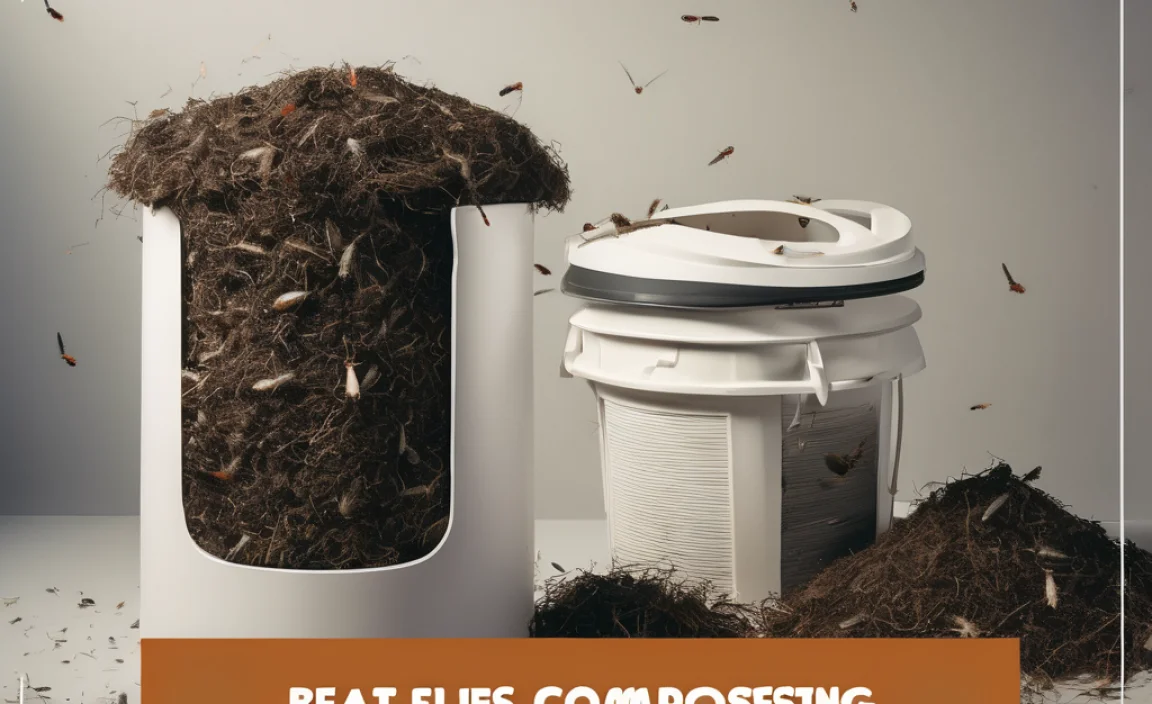Hey there, I’m Troy D Harn from TopChooser! Ever feel a bit overwhelmed by food scraps and yard waste piling up, and wonder if there’s a better way? You’re not alone. So many of us want to do our part for the planet, but figuring out composting can seem like a big puzzle.
Well, good news! We’re going to dive into some amazing, innovative ideas that make composting not just easier, but a real game-changer for fighting climate change. Get ready to discover some genius solutions!
Composting: Your Secret Weapon Against Climate Change
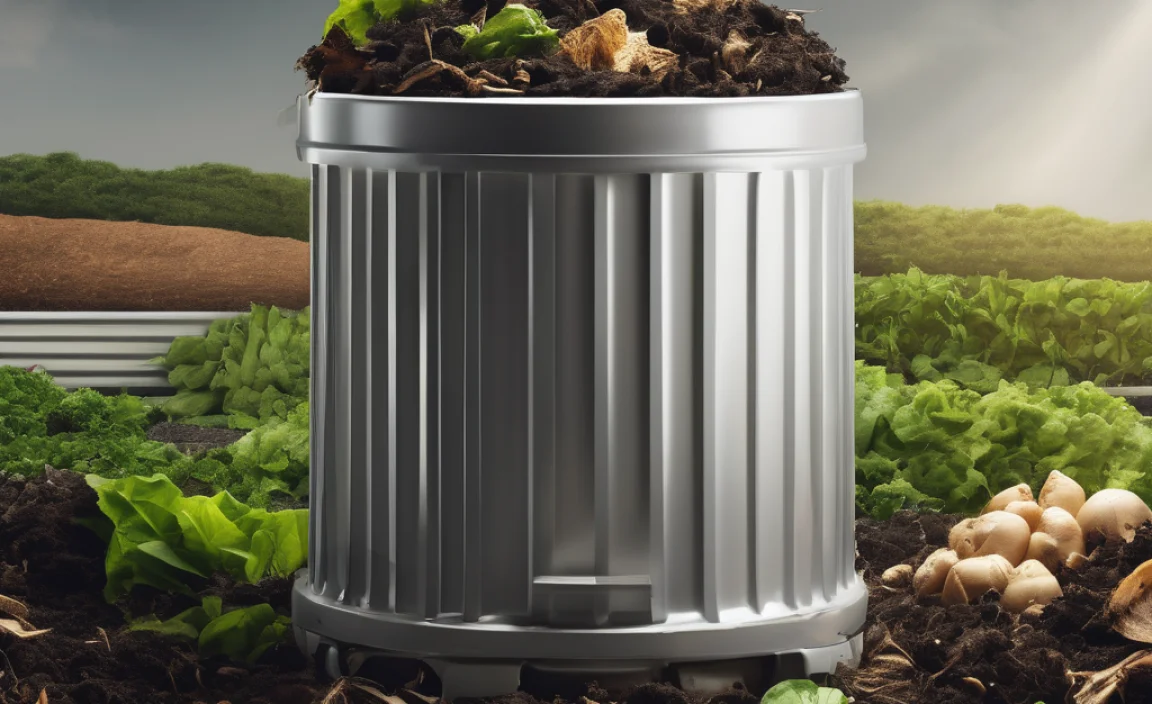
It might surprise you, but composting is one of the most effective things you can do right at home to make a positive impact on climate change. When organic waste like food scraps and yard trimmings ends up in landfills, it decomposes without oxygen.
This process creates methane, a potent greenhouse gas that’s much more harmful than carbon dioxide in the short term. By composting, we divert this waste and turn it into something incredibly valuable: nutrient-rich soil.
This isn’t just about reducing landfill waste, though that’s a huge win. Composting actively helps our planet in several ways:
- Reduces Methane Emissions: Directly tackles a major greenhouse gas contributor from landfills.
- Enriches Soil Health: Compost improves soil structure, water retention, and fertility, meaning plants grow better and healthier. Healthier plants absorb more CO2 from the atmosphere.
- Reduces Need for Chemical Fertilizers: Compost provides natural nutrients, cutting down on the energy-intensive production and transportation of synthetic fertilizers.
- Conserves Water: Compost-rich soil holds moisture longer, reducing the need for frequent watering.
- Supports Biodiversity: Healthy soil is teeming with life, from earthworms to beneficial microbes, which are vital for a healthy ecosystem.
So, how do we make composting even more effective and accessible? That’s where some truly genius innovations come in! These aren’t just your grandma’s compost piles (though those are great too!). We’re talking about smart solutions that fit modern lifestyles and supercharge our efforts to combat climate change.
Genius Composting Innovations for a Greener Planet
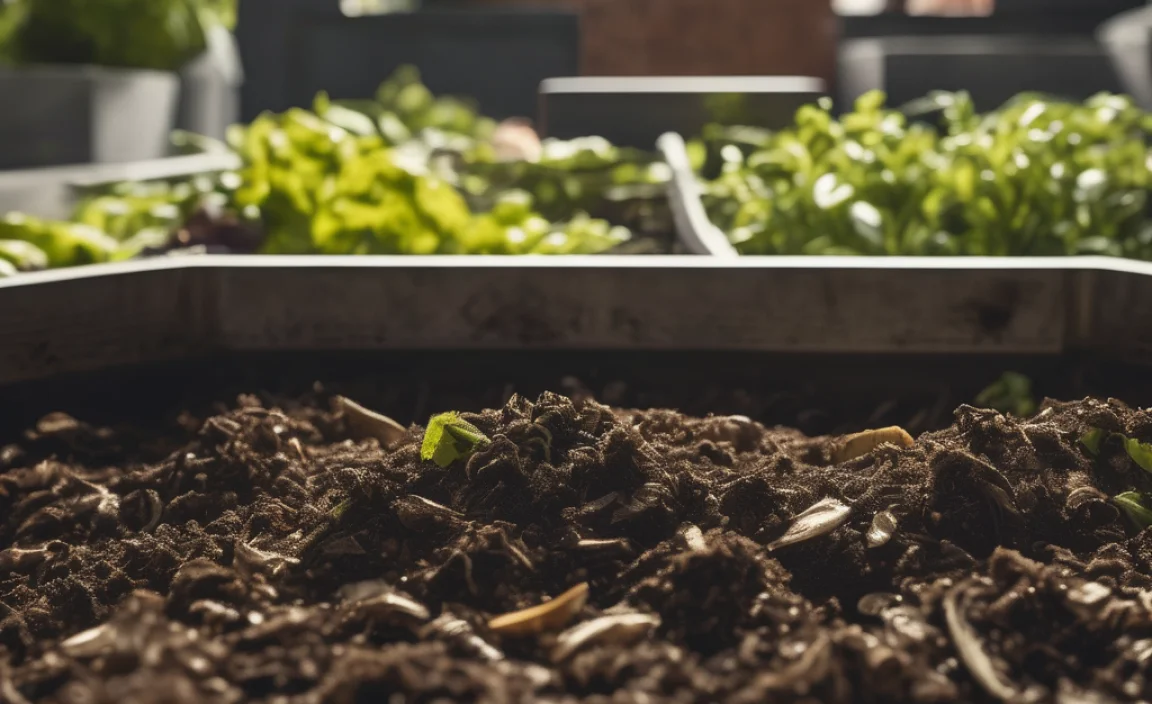
The world of composting is buzzing with new ideas! These innovations are designed to make composting easier, faster, more efficient, and even more beneficial for the environment. Let’s take a look at some real game-changers.
Smart Compost Bins: Let Technology Help
Remember when “smart” meant a phone? Now it means your compost bin can help you out! Smart compost bins are designed to monitor and optimize the composting process. Think sensors that track temperature, moisture, and aeration, all feeding data to an app on your phone.
How they work:
- Automated Aeration: Some bins have built-in fans or turning mechanisms that ensure your compost gets enough oxygen without you having to do much manual work.
- Moisture Sensors: These tell you exactly when to add water or dry materials, preventing your compost from getting too soggy or too dry – a common beginner’s pitfall.
- Temp Monitoring: Keeping the compost pile at the right temperature is crucial for breaking down materials quickly and efficiently, and often involves a heating element or fan.
- App Integration: You get real-time updates and alerts, making it easy to manage your compost from anywhere.
Pros:
- Faster composting times.
- Reduced smells and pests due to optimal conditions.
- Great for beginners or those with limited time.
- Consistent, high-quality compost.
Cons:
- Can be more expensive upfront.
- Requires electricity (though often low-wattage).
- Might feel like “too much tech” for some traditional composters.
Companies like Lomi are making waves with electric composters that can break down food waste in a matter of hours, turning scraps into a nutrient-rich dirt-like material. While not traditional microbial composting, these electric solutions dramatically reduce waste going to landfills and prevent methane emissions. It’s a different approach but achieves a similar climate-friendly goal. For those looking for a more traditional, but still high-tech, approach, check out systems that integrate sensors and automated aeration, which significantly improve the efficiency of microbial decomposition.
Bokashi: Fermenting Your Way to Soil Goodness
Heard of Bokashi? It’s an ancient Japanese method that uses fermentation instead of decomposition. It’s a fantastic solution for composting food scraps that traditional methods struggle with, like meat, dairy, and oily foods.
How it works:
- Anaerobic Fermentation: You place your food scraps (including those tricky items like chicken bones and cheese rinds) into an airtight Bokashi bin.
- Adding the Bran: You sprinkle a special Bokashi bran over the food scraps. This bran is inoculated with Effective Microorganisms (EMs) – a mix of beneficial bacteria and yeasts.
- Sealing the Bin: You press out any excess air and seal the lid tightly.
- Fermenting: The EMs get to work, pickling and fermenting the waste in an oxygen-free environment. This process takes about two weeks.
- Draining the “Tea”: A nutrient-rich liquid, often called “Bokashi tea,” drains from the bottom of the bin. This liquid is a fantastic fertilizer for your plants (just dilute it first!).
- Burying or Adding to Compost: The fermented material, while not fully composted yet, is now ready to be buried in your garden soil or added to a traditional compost pile. It breaks down very quickly once exposed to oxygen and microbes in the soil.
Pros:
- Can handle almost all food scraps, including meat, dairy, and oils.
- Significantly reduces odors during the fermentation process.
- Produces a nutrient-rich liquid fertilizer.
- Takes up less space than traditional composting, making it ideal for apartments or small yards.
- The fermented material breaks down very rapidly when added to soil, boosting microbial activity.
Cons:
- Requires purchasing Bokashi bran.
- The fermented material needs to be buried or further composted; it’s not finished compost on its own.
- Requires an airtight bin and the bran to work.
Bokashi is a brilliant way to tackle kitchen waste that often ends up in the trash. Learn more about the science behind these beneficial microorganisms from institutions like the University of Wisconsin-Madison’s Microbiology department which has explored the applications of EM technologies.
Community Composting & Smart Collection Systems
Not everyone has the space, time, or inclination for backyard composting. That’s where community composting and smart collection systems shine. These innovations bring composting to a larger scale and make it incredibly convenient for urban dwellers and busy households.
How they work:
- Drop-off Sites: Many communities now have designated drop-off locations where residents can bring their food scraps. These are often managed by local organizations or municipalities.
- Subscription Services: Companies offer curbside pickup for food scraps. You’re provided with a special bin, and they collect it regularly, just like trash or recycling.
- Centralized Composting Facilities: These facilities use large-scale composting methods to process the collected organic waste, turning it into compost that can be used in local parks, community gardens, or sold back to residents.
- Smart Bins for Businesses/Apartments: Some systems use smart bins that alert collection services when they’re full, optimizing pickup routes and reducing fuel consumption.
Pros:
- Extremely convenient, especially for apartment dwellers or those with limited space.
- Processes larger volumes of organic waste effectively.
- Creates local jobs and supports local economies.
- Reduces landfill methane on a community level.
- Compost produced can be used to enhance local green spaces.
Cons:
- Can involve a cost (subscription fees or taxes).
- Relies on the efficiency and reliability of the service provider.
- Less direct control over and connection to the composting process itself.
Organizations like the U.S. Environmental Protection Agency (EPA) provide resources on food waste reduction and composting, including information on community-based initiatives. These programs are vital for scaling up composting efforts and making a significant dent in landfill waste.
Home Electric Composters: The Speedy Solution
These appliances are designed to break down food waste quickly, often in a matter of hours, using heat and aeration. Think of them as a super-fast dehydrator and grinder combined, often with UV light to reduce pathogens and odors.
How they work:
- Load Your Scraps: You simply put your food scraps (including many items you wouldn’t compost traditionally) into the machine.
- Run the Cycle: You press a button, and the machine heats, grinds, and aerates the waste.
- Reduce Volume: The process dramatically reduces the volume of your food waste, often by 80-90%.
- Result: You’re left with a dry, soil-like amendment that can be added to your garden or houseplants. It’s not “live” compost teeming with microbes, but it’s a waste diversion superpower.
Pros:
- Extremely fast – ready in hours, not weeks or months.
- Handles a wide range of food scraps, including meat, dairy, and bones.
- Significantly reduces odors and pests.
- Compact and suitable for small kitchens.
- Reduces the volume of waste going to landfill.
Cons:
- Uses electricity, so there’s an ongoing energy cost.
- The end product is more of a dehydrated amendment than biologically active compost.
- Initial purchase price can be high.
- Not a true composting method in the traditional biological sense, though it achieves significant waste reduction and methane avoidance.
These machines, like the Lomi mentioned earlier, are a testament to how technology can help us manage waste more effectively and reduce our environmental footprint. They offer a convenient way to deal with kitchen scraps that would otherwise contribute to landfill methane.
Understanding the Composting Process: The Basics Behind the Innovations
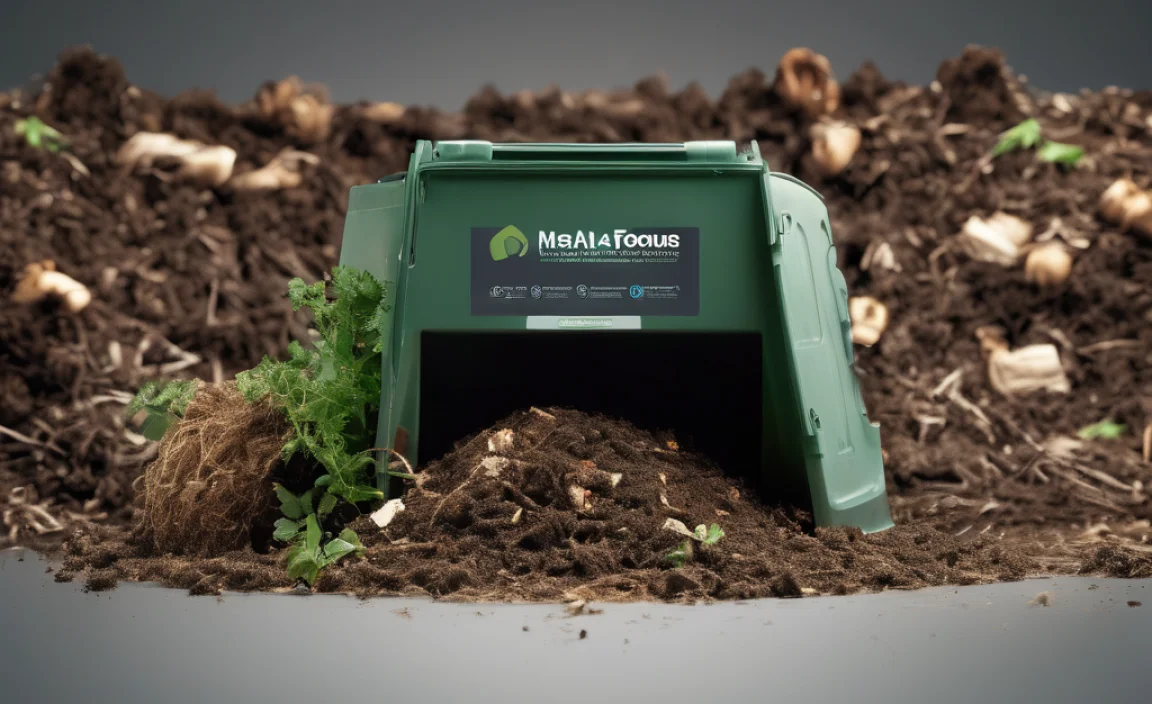
While innovations are exciting, understanding the core principles of composting helps you appreciate why these new methods work and how to best use them. Traditional composting relies on a balance of key ingredients and conditions:
The “Greens” and “Browns” Recipe
Think of this like baking – you need the right mix of ingredients!
- Greens (Nitrogen-rich): These are wet materials that provide nitrogen. Think fruit and vegetable scraps, coffee grounds, tea bags, grass clippings, and fresh plant trimmings.
- Browns (Carbon-rich): These are dry materials that provide carbon and structure. Think dry leaves, shredded newspaper, cardboard (non-glossy), twigs, straw, and sawdust.
A good rule of thumb is to aim for a ratio of about 2 to 3 parts Browns to 1 part Greens by volume. Too many greens can lead to a soggy, smelly pile. Too many browns can slow breakdown.
Essential Elements for Successful Composting
Beyond the greens and browns, three other elements are critical:
- Air (Oxygen): Microbes that break down organic matter need oxygen. Turning your compost pile regularly or ensuring it’s not too compacted is key. This is where smart bins with aeration systems really shine!
- Moisture: A compost pile should be as damp as a wrung-out sponge. Too dry, and the microbes slow down. Too wet, and the pile can become anaerobic and smelly.
- Microorganisms: These tiny powerhouses (bacteria, fungi, actinomycetes) do the actual work of breaking down the organic material. They are naturally present in soil and on organic matter. Adding a shovel-full of finished compost or garden soil can kickstart the process.
A Comparison: Traditional vs. Innovative Methods
Here’s a quick look at how some innovative solutions stack up against traditional composting:
| Feature | Traditional Backyard Composting | Bokashi Fermentation | Smart Electric Composter | Community Composting |
|---|---|---|---|---|
| Ideal for: | Homes with yards, gardeners, those with time for management. | Apartments, small spaces, handling all food scraps (meat/dairy). | Apartments, small kitchens, speed and convenience. | Urban dwellers, busy households, large-scale waste diversion. |
| Process Time (to usable end product): | 3-12 months | 2-4 weeks (fermentation) + burying/composting time | Hours | Varies (facility dependent) |
| What can be composted: | Veg/fruit scraps, yard waste, coffee grounds, paper. | Almost all food scraps (incl. meat, dairy, bones). | Most food scraps (incl. meat, dairy, bones). | Typically veg/fruit scraps, coffee grounds, some other organics. |
| Odor Control: | Good if managed well; can be an issue if neglected. | Very effective during fermentation. | Very effective. | Managed at facility level; collection bins designed to control odor. |
| Effort Level: | Moderate (turning, watering). | Low (layering, draining). | Very Low (load, press button). | Very Low (collecting, dropping off/setting out). |
| End Product: | Nutrient-rich compost. | Fermented material (needs further decomposition) + fertilizer tea. | Dehydrated, soil-like amendment. | Compost (used by facility or available to community). |
| Climate Impact: | High (reduces landfill methane, enriches soil). | High (diverts waste, enriches soil upon decomposition). | High (diverts waste from landfill, avoiding methane). | High (large-scale waste diversion & methane reduction). |
Making Your Choice: Which Innovation is Right for You?
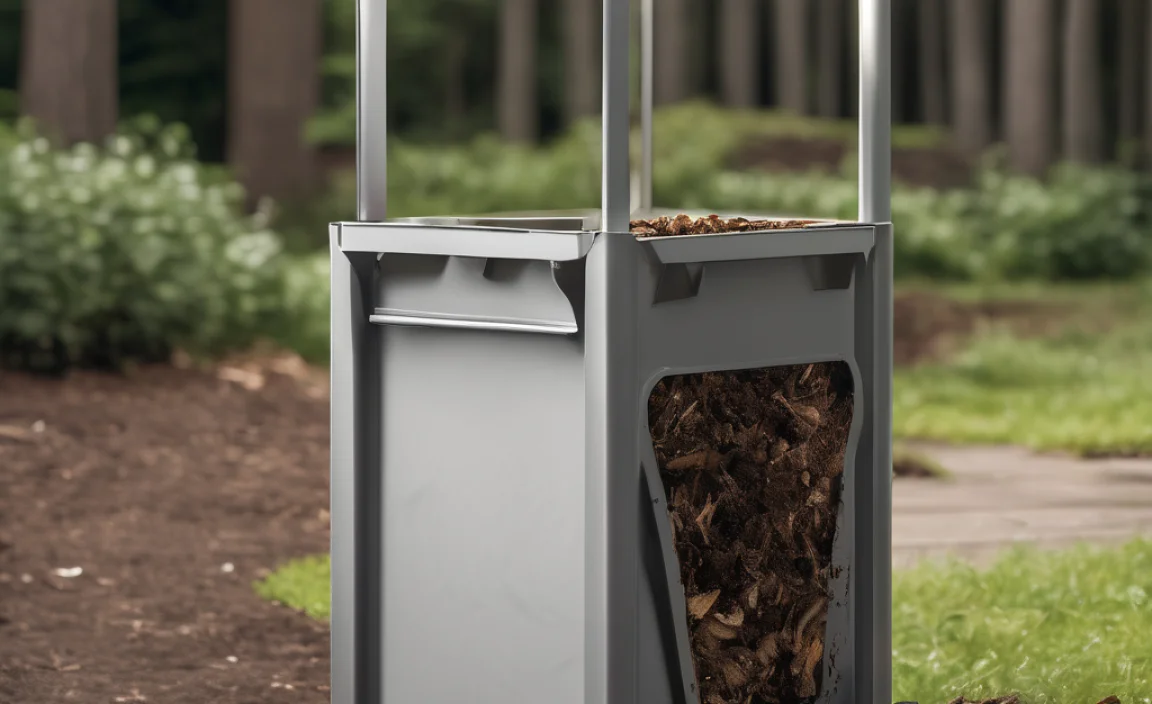
The best climate change composting solution is the one you’ll actually use! Consider your lifestyle, living situation, and what you hope to achieve.
For Apartment Dwellers or Small Spaces:
- Bokashi: Ideal if you want to process all your food scraps and have limited space. The compact bins and minimal odor are big pluses. Bonus: you get that fantastic liquid fertilizer!
- Electric Composter: If speed and volume reduction are key, and you don’t mind the upfront cost and electricity usage, this is a fantastic choice. It makes dealing with kitchen waste incredibly simple.
- Community Composting: Look for local drop-off sites or collection services. This is often the most effortless way to participate.
For Homeowners with Yards:
- Smart Compost Bins: If you want to supercharge your backyard composting and reduce manual effort, a smart bin can automate aeration, moisture control, and monitoring, leading to faster compost and less guesswork.
- Traditional Composting with a Twist: Even if you stick with a traditional bin or pile, you can incorporate some of the principles. Use a thermometer to monitor your pile’s heat. Consider adding worms (vermicomposting) to speed up breakdown.
- Bokashi + Traditional: Use Bokashi for your kitchen scraps (especially meat/dairy) and then add the fermented material to your slower-digesting outdoor compost pile. This speeds up your main compost pile and handles tricky items.
For the Tech-Savvy Gardener:
- Smart Bin Systems: These offer data, control, and optimization, appealing to those who love to manage processes with precision.
- Electric Composters: If you appreciate efficiency and a quick, tangible result, these are a great fit.
.lwrp.link-whisper-related-posts{
margin-top: 40px;
margin-bottom: 30px;
}
.lwrp .lwrp-title{
}.lwrp .lwrp-description{
}
.lwrp .lwrp-list-container{
}
.lwrp .lwrp-list-multi-container{
display: flex;
}
.lwrp .lwrp-list-double{
width: 48%;
}
.lwrp .lwrp-list-triple{
width: 32%;
}
.lwrp .lwrp-list-row-container{
display: flex;
justify-content: space-between;
}
.lwrp .lwrp-list-row-container .lwrp-list-item{
width: calc(25% – 20px);
}
.lwrp .lwrp-list-item:not(.lwrp-no-posts-message-item){
max-width: 150px;
}
.lwrp .lwrp-list-item img{
max-width: 100%;
height: auto;
object-fit: cover;
aspect-ratio: 1 / 1;
}
.lwrp .lwrp-list-item.lwrp-empty-list-item{
background: initial !important;
}
.lwrp .lwrp-list-item .lwrp-list-link .lwrp-list-link-title-text,
.lwrp .lwrp-list-item .lwrp-list-no-posts-message{
}@media screen and (max-width: 480px) {
.lwrp.link-whisper-related-posts{
}
.lwrp .lwrp-title{
}.lwrp .lwrp-description{
}
.lwrp .lwrp-list-multi-container{
flex-direction: column;
}
.lwrp .lwrp-list-multi-container ul.lwrp-list{
margin-top: 0px;
margin-bottom: 0px;
padding-top: 0px;
padding-bottom: 0px;
}
.lwrp .lwrp-list-double,
.lwrp .lwrp-list-triple{
width: 100%;
}
.lwrp .lwrp-list-row-container{
justify-content: initial;
flex-direction: column;
}
.lwrp .lwrp-list-row-container .lwrp-list-item{
width: 100%;
}
.lwrp .lwrp-list-item:not(.lwrp-no-posts-message-item){
max-width: initial;
}
.lwrp .lwrp-list-item .lwrp-list-link .lwrp-list-link-title-text,
.lwrp .lwrp-list-item .lwrp-list-no-posts-message{
};
}

I am passionate about home engineering. I specialize in designing, installing, and maintaining heating, ventilation, and air conditioning systems. My goal is to help people stay comfortable in their homes all year long.

